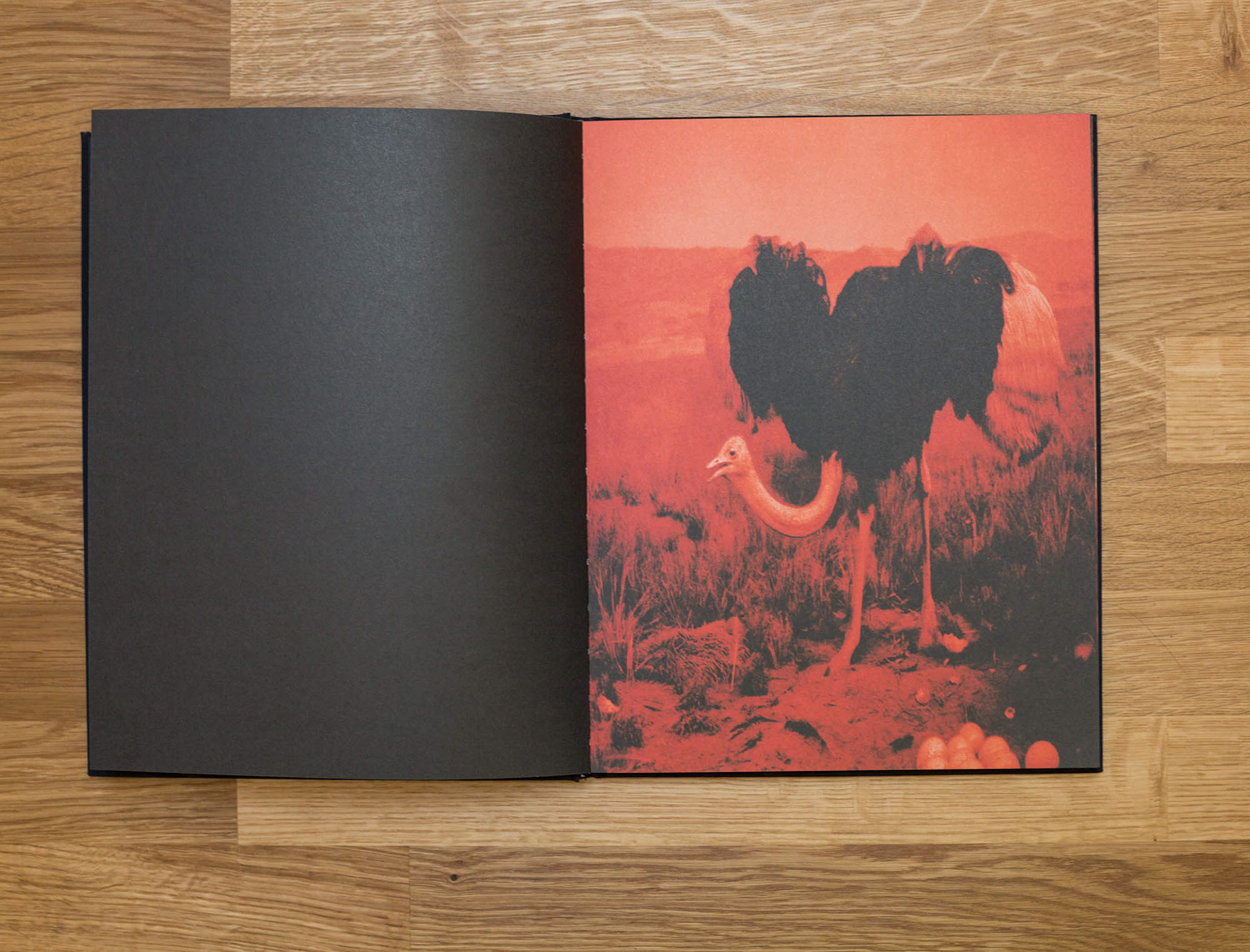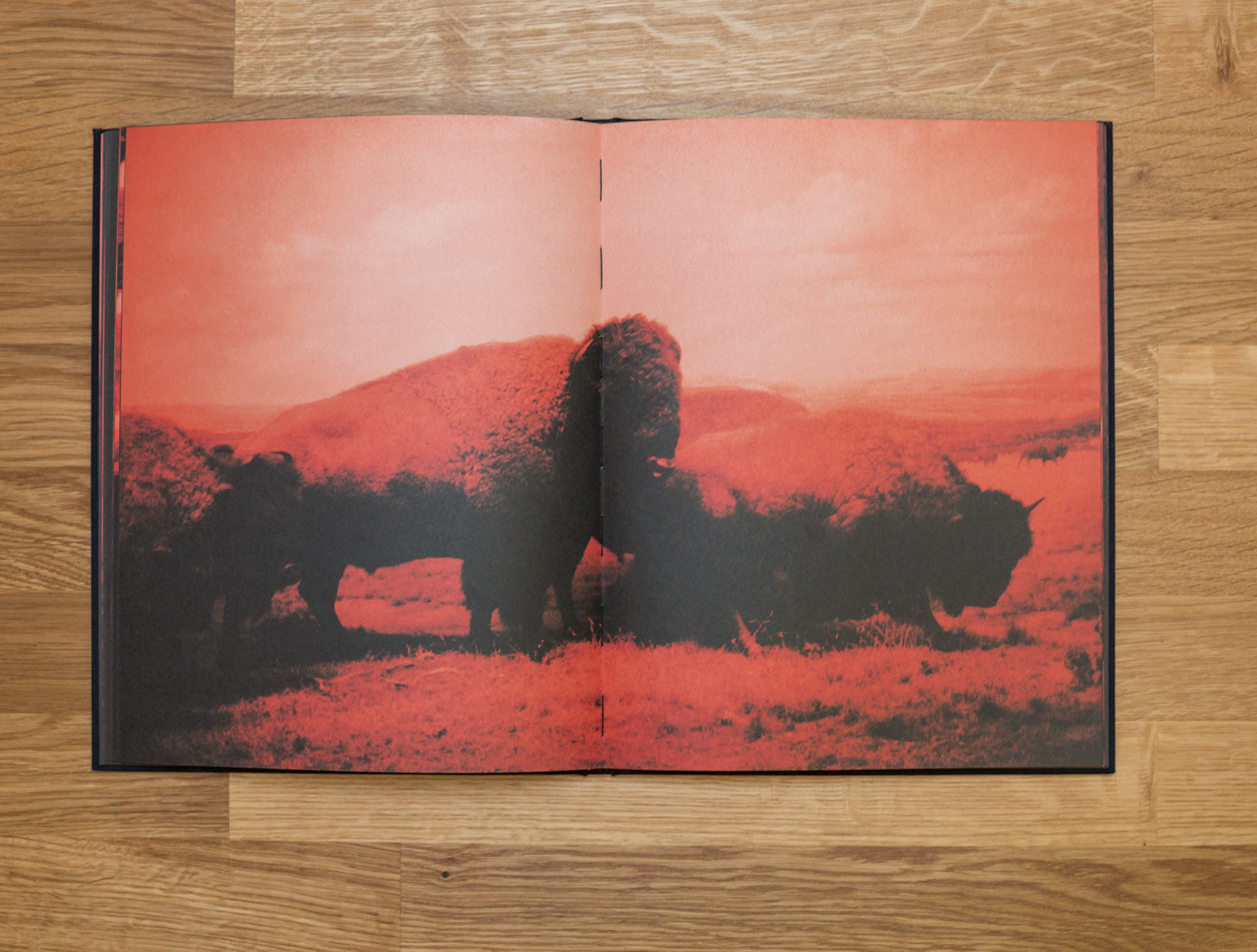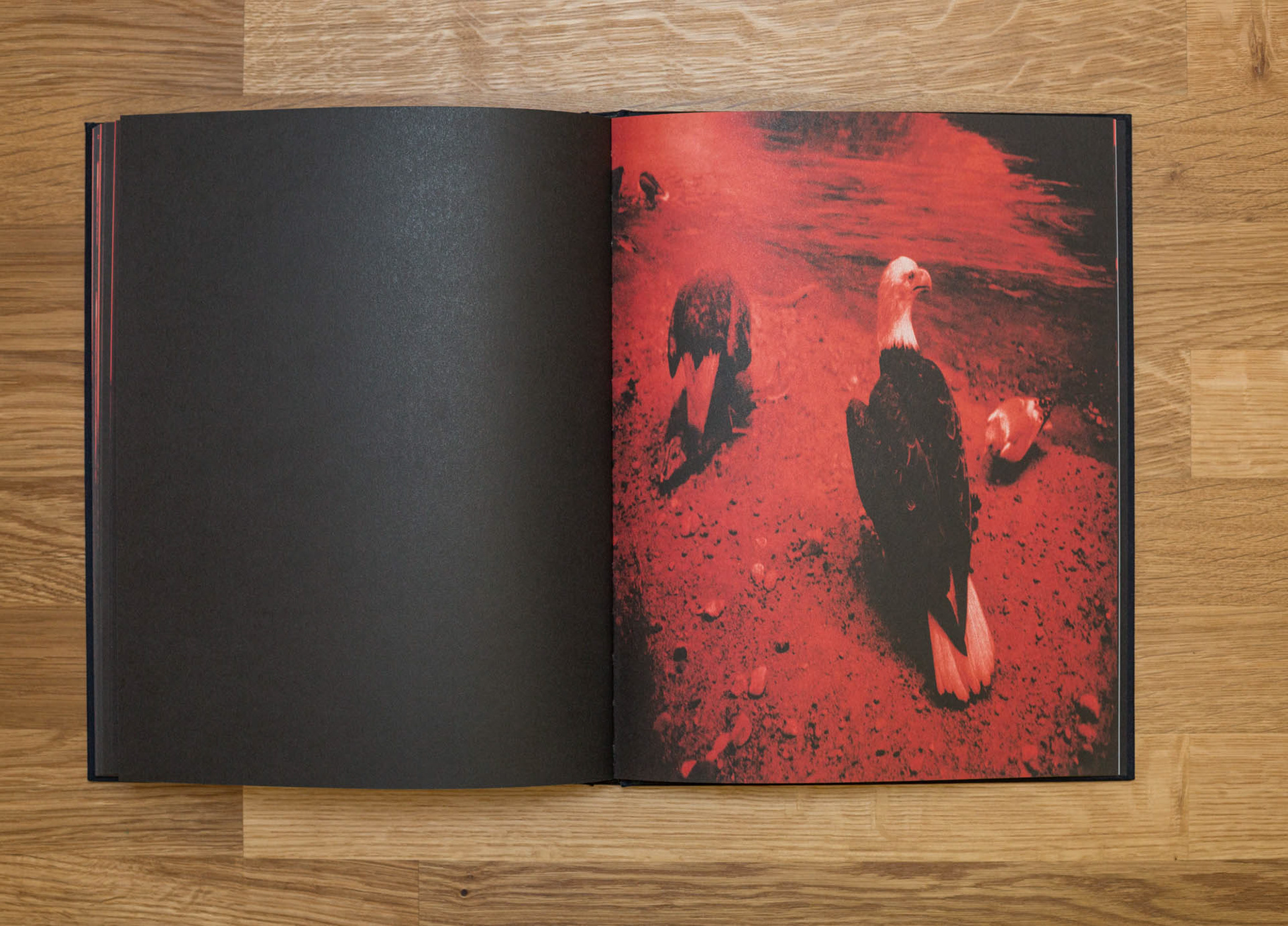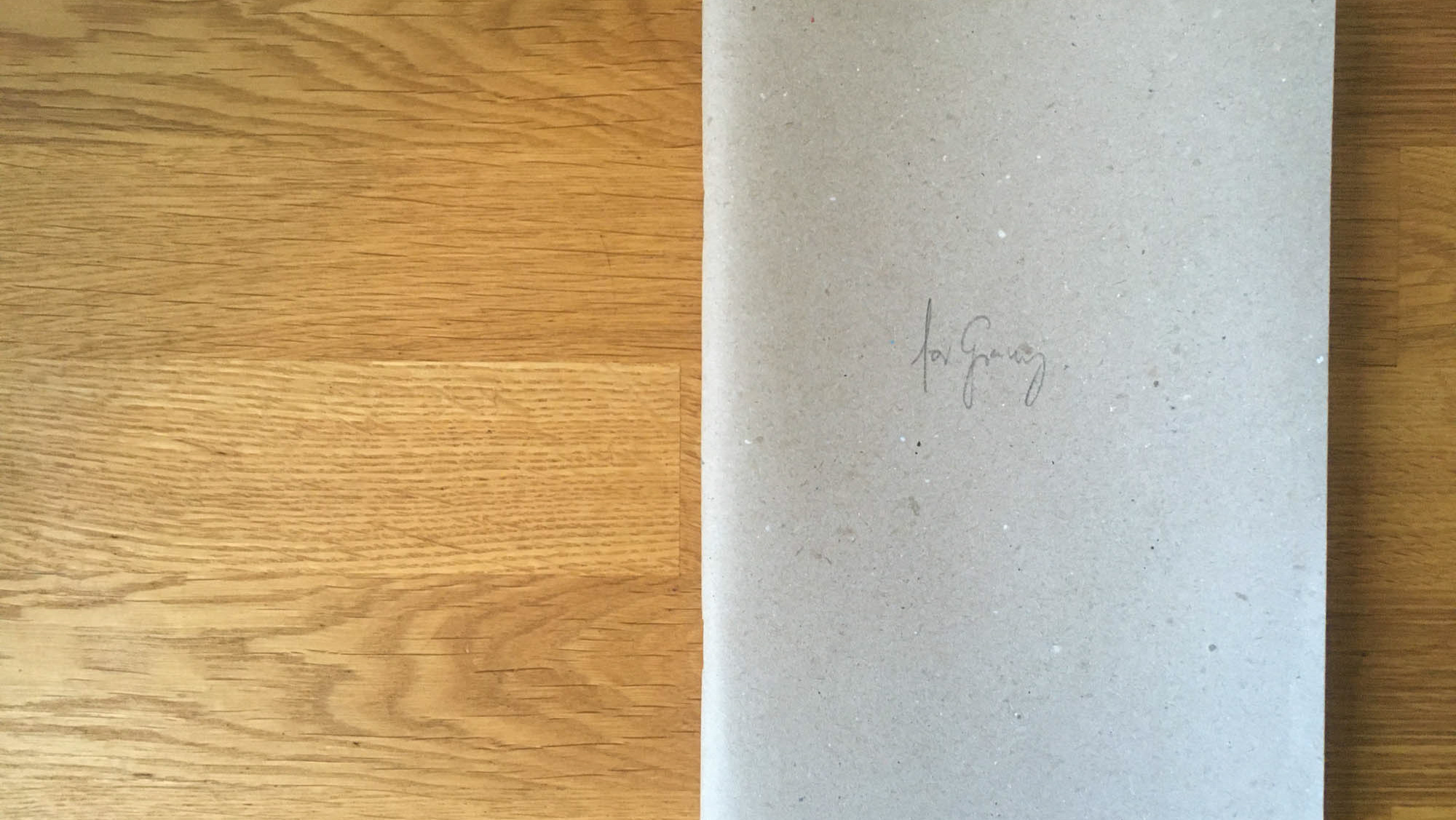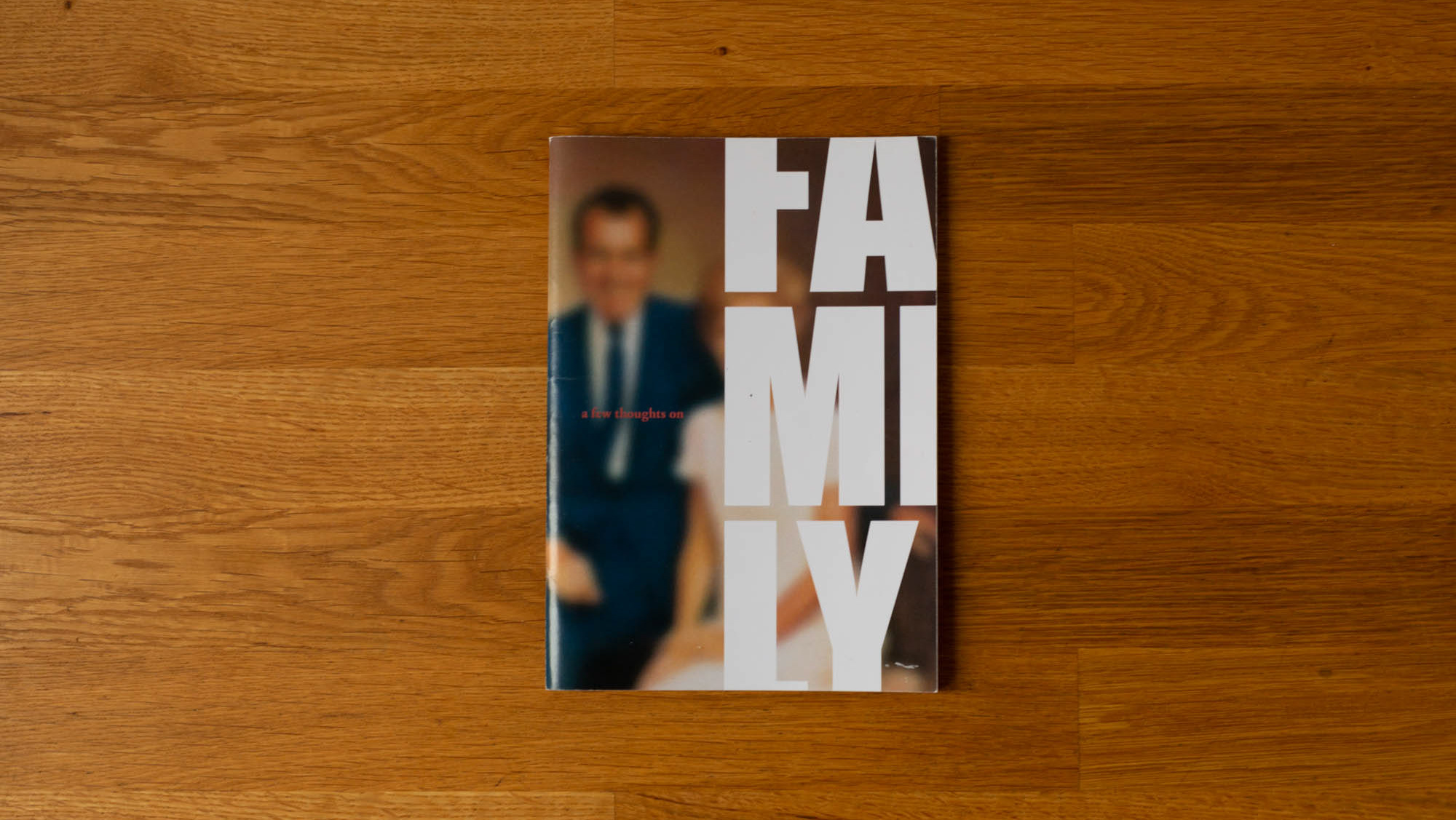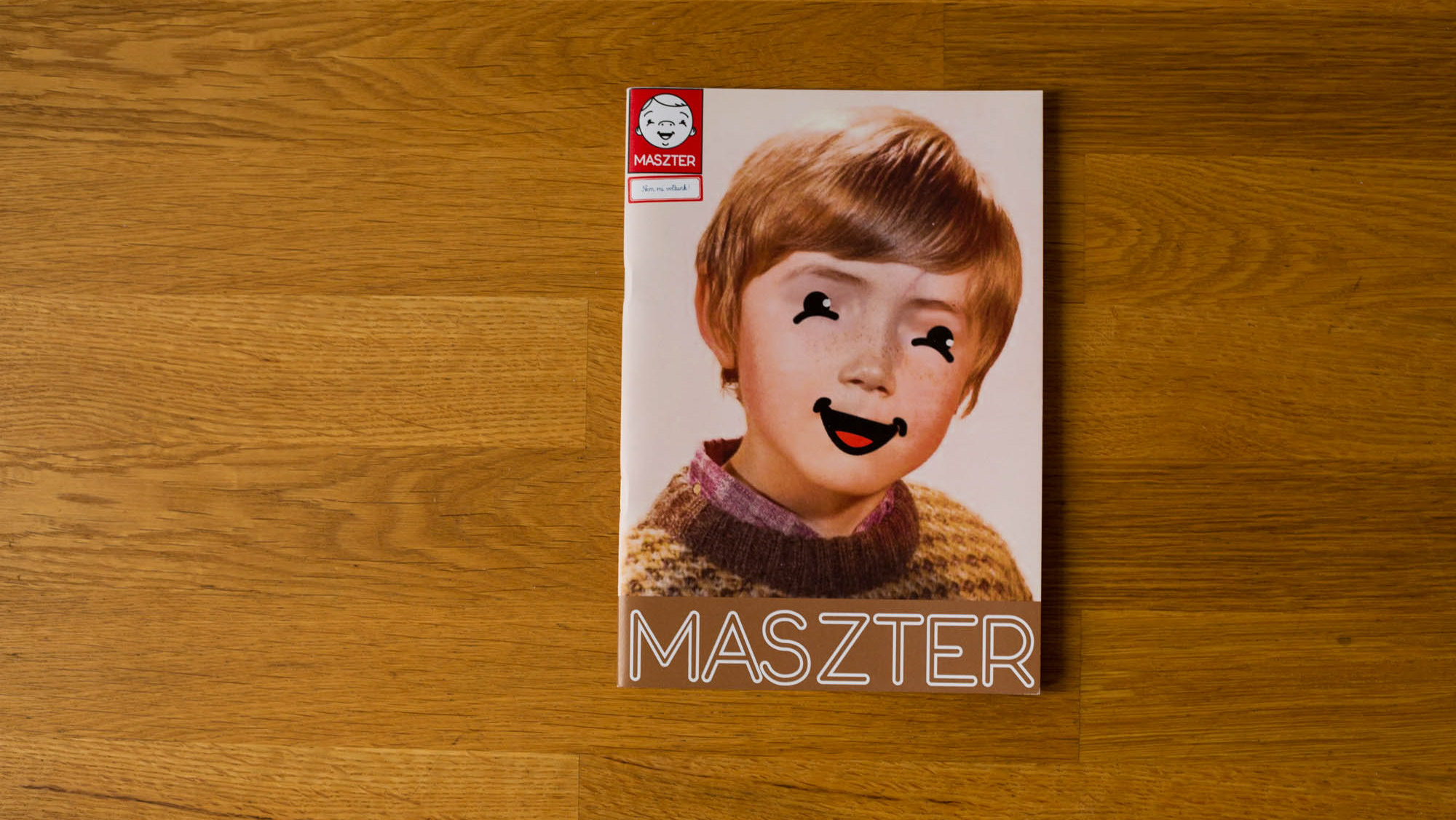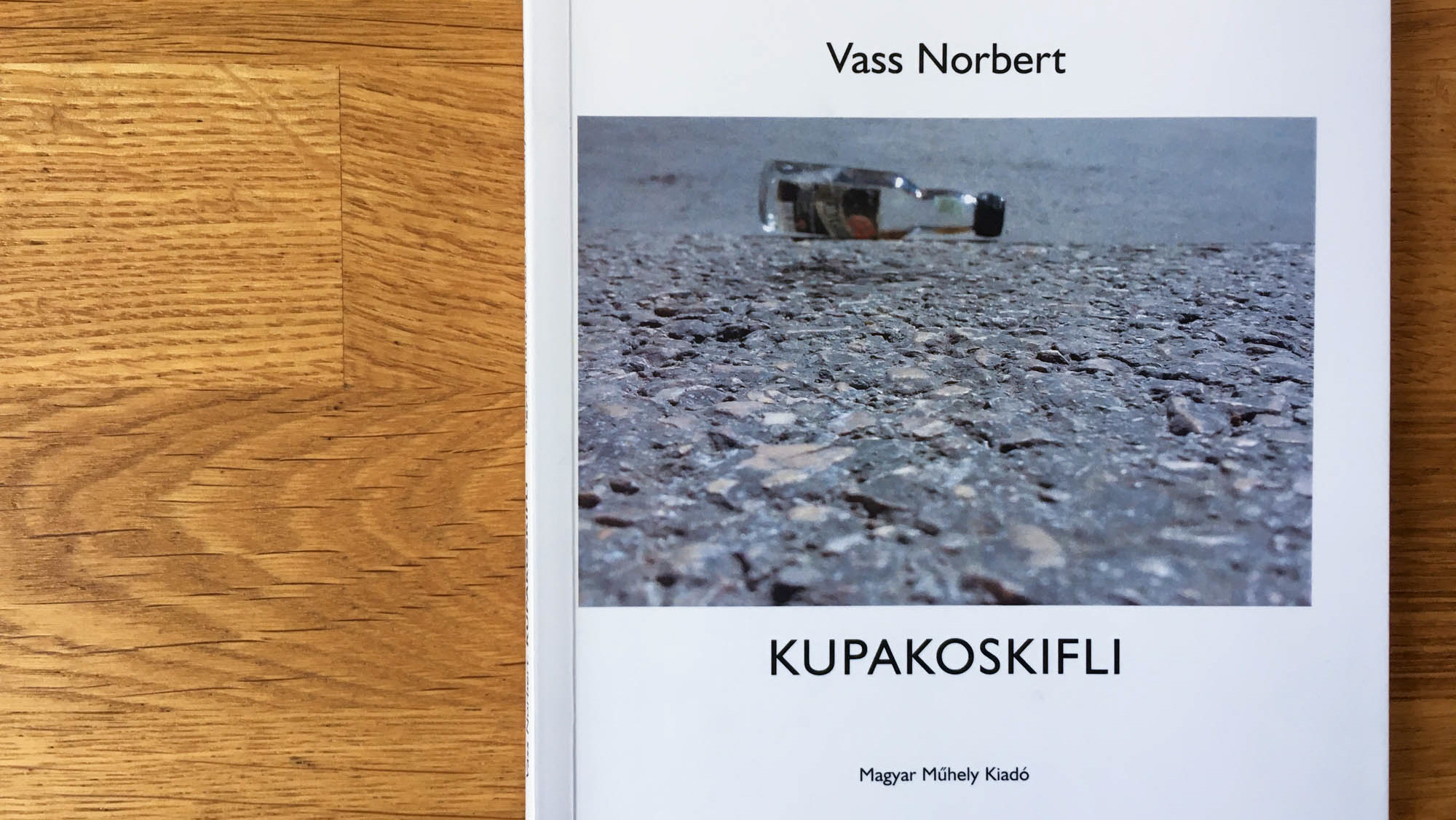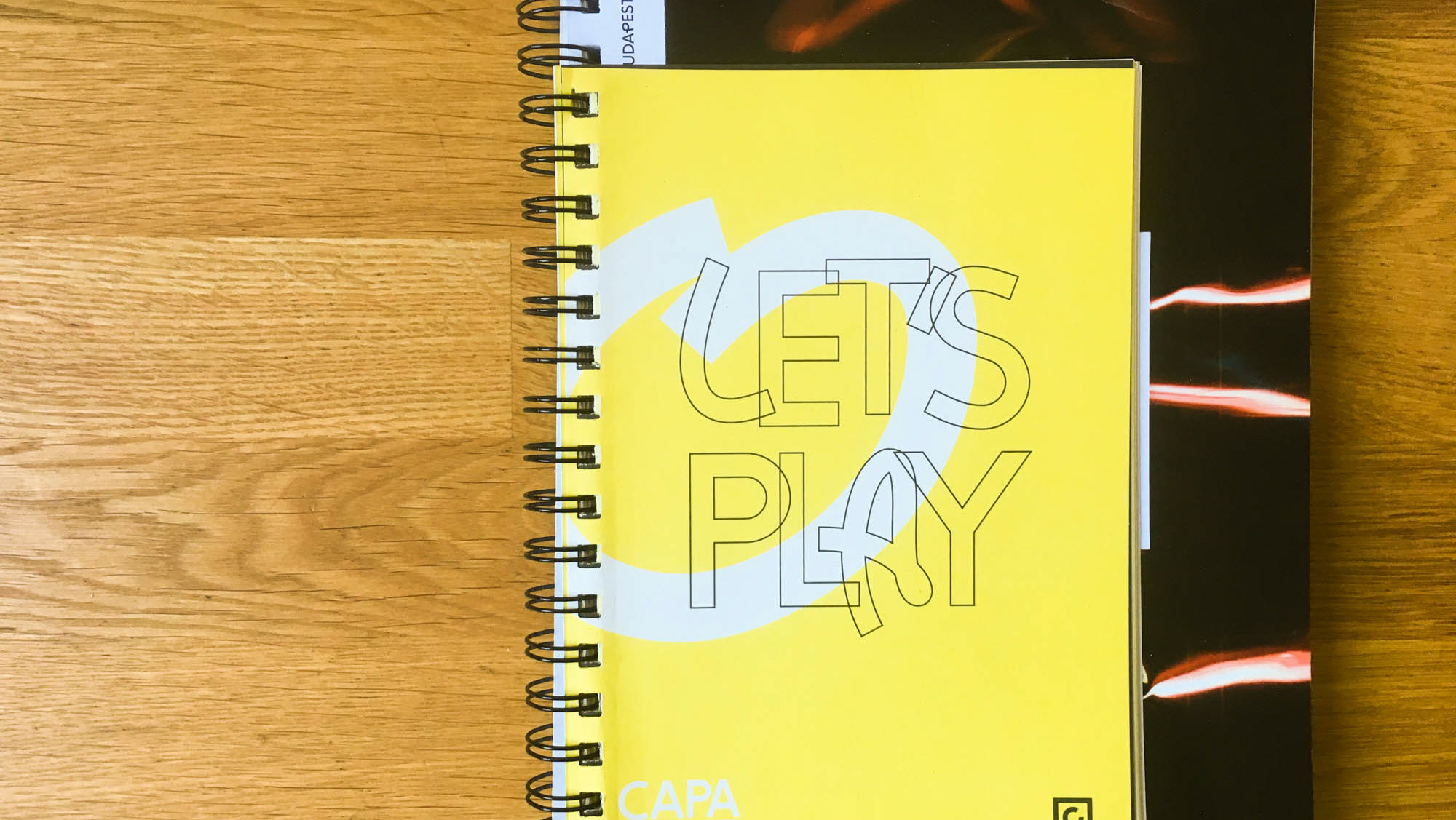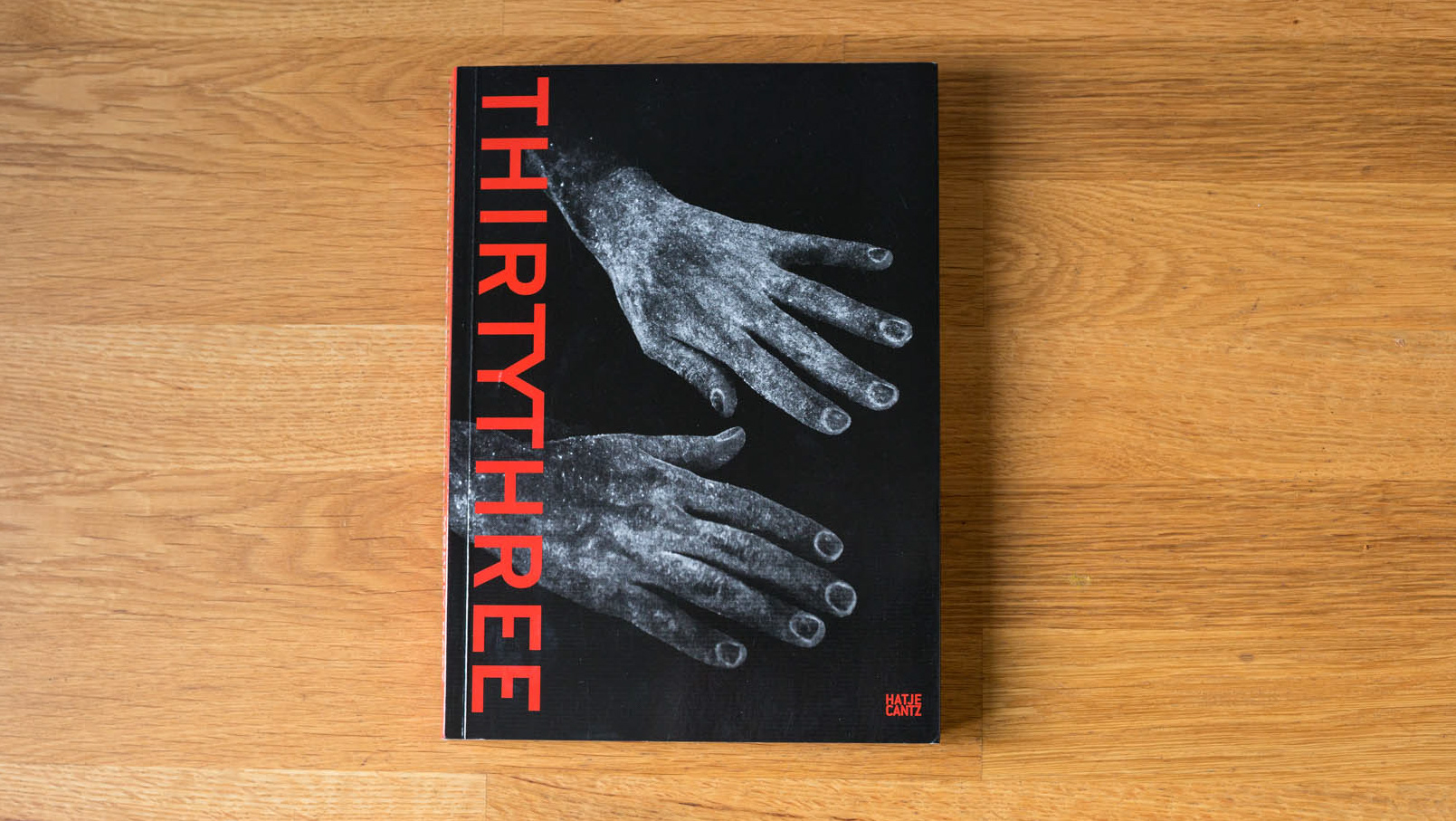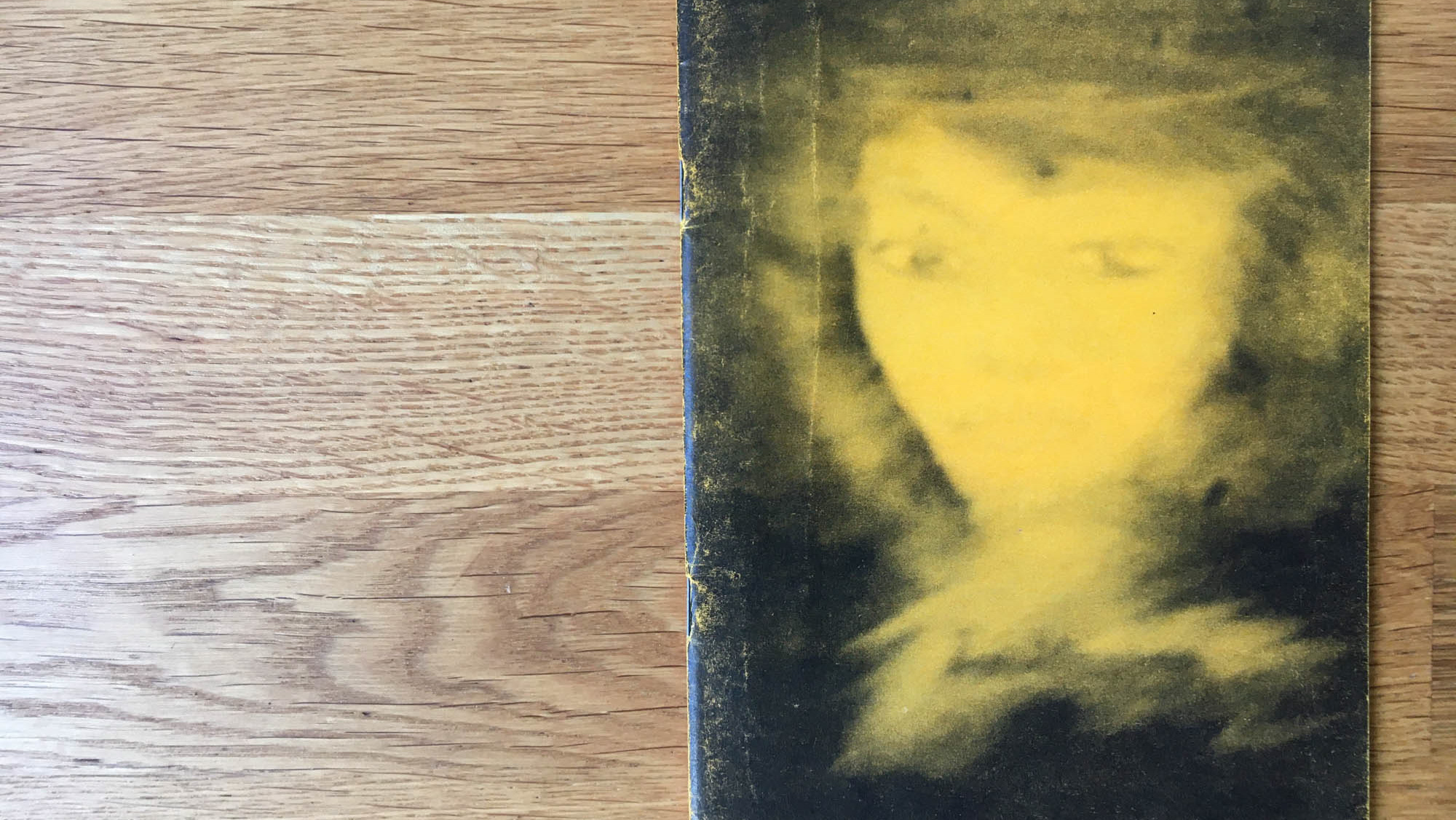Gábor Palotai, AM MU NA HI Pictures from the American Museum of Natural History New York
Artist: Gábor Palotai
Title: AM MU NA HI Pictures from the American Museum of Natural History New York
Designer: Gabor Palotai Design
Text: Linda Rampell
Editor: Gabor Palotai
English translation:
Publisher: Gabor Palotai Publisher
Publication date and place: 2002
Print: Brolins Offset, Stockholm
Format, binding: Hard cover
Number of pages and images: 70
Type of printing and paper: Lassebo Linne, Svenskt Papper
Genre: Photobook
Book description (eng):
AM MU NA HI is an abbreviation, derived from the American Museum of Natural History, situated in New York. Gábor Palotai photographed the stuffed animals at the Museum and then computer manipulated the pictures – a modus operandi by which they were transformed into allegory. No longer recognized as they were once seen, they became a memento of a death which for them had already occurred. In their state of turquoise, the pictures were published in Maximizing the Audience. After the fall of 2001, they were turned red.
Seen as a displacement of the civilized humans’ apprehension of bewilderment, experienced on a safari or at the zoo, the pictures stress the metropolitan delirium. As pictorial waxworks the animals highlight urbanity as a zoological garden. Exotic beings behave differently, domesticated, whimsical, bigoted. The leopard even neglects you. Frightened, the gang of wolves are on the run. The irritating family of rhinoceros block the way by not moving. A vulture averts his malicious eyes from the leftovers of a tuck-in. Bison copulate, or walk into each other from behind. While the peppy squirrel scampers to the top of a pine, the baby bear clings to the stump of a tree.
Who is watching and who is being watched? The deer stare at the beholder, while the bear, standing in an upright power position, sees through the body of the beholder. The interface that separates the beholder’s space from the picture becomes blurred. Metamorphosed, the voyeur vanishes withering. A panther is lying in ambush, watching a cave and gazing into the twilight. Seeing the panther from behind, the vision of the beholder participates in the look of the animal. Seduced into an act of slow-motion eroticism, the animals rape the gaze of the onlooker, holding it prisoner, just to spread out the vision into a phantasmal world, perspectively out of joint. Altered into the same red color as the landscape, the animals appear adjusted by adaptation, mesmerized by the heat haze of the red.
Fading as if nothing were real, the animals dwell on the other side where death is no longer superficial. Mummified reality, embalmed in a hallucinated condition, suspended between presence and inaccessibility. They face death petrified, until mortality ceases to exist. In a twilight zone the animals come alive. The monkeys swing their bodies through a magic landscape. A leopard is fixed in a porcelain pose, and the silhouette of paralyzed parrots sitting in silence on a branch, amorous.
A lion turns his head towards the onlooker, anxiously urbanely. Creatures constantly on their guard against themselves, against something on the horizon, against the onlooker. But at the same time as they waylay, they have transformed their mode of being into a lascivious lingering. The ostriches by the mountain crest have gone numb.
Seen as a displacement of the civilized humans’ apprehension of bewilderment, experienced on a safari or at the zoo, the pictures stress the metropolitan delirium. As pictorial waxworks the animals highlight urbanity as a zoological garden. Exotic beings behave differently, domesticated, whimsical, bigoted. The leopard even neglects you. Frightened, the gang of wolves are on the run. The irritating family of rhinoceros block the way by not moving. A vulture averts his malicious eyes from the leftovers of a tuck-in. Bison copulate, or walk into each other from behind. While the peppy squirrel scampers to the top of a pine, the baby bear clings to the stump of a tree.
Who is watching and who is being watched? The deer stare at the beholder, while the bear, standing in an upright power position, sees through the body of the beholder. The interface that separates the beholder’s space from the picture becomes blurred. Metamorphosed, the voyeur vanishes withering. A panther is lying in ambush, watching a cave and gazing into the twilight. Seeing the panther from behind, the vision of the beholder participates in the look of the animal. Seduced into an act of slow-motion eroticism, the animals rape the gaze of the onlooker, holding it prisoner, just to spread out the vision into a phantasmal world, perspectively out of joint. Altered into the same red color as the landscape, the animals appear adjusted by adaptation, mesmerized by the heat haze of the red.
Fading as if nothing were real, the animals dwell on the other side where death is no longer superficial. Mummified reality, embalmed in a hallucinated condition, suspended between presence and inaccessibility. They face death petrified, until mortality ceases to exist. In a twilight zone the animals come alive. The monkeys swing their bodies through a magic landscape. A leopard is fixed in a porcelain pose, and the silhouette of paralyzed parrots sitting in silence on a branch, amorous.
A lion turns his head towards the onlooker, anxiously urbanely. Creatures constantly on their guard against themselves, against something on the horizon, against the onlooker. But at the same time as they waylay, they have transformed their mode of being into a lascivious lingering. The ostriches by the mountain crest have gone numb.
WEB
www.gaborpalotai.com

